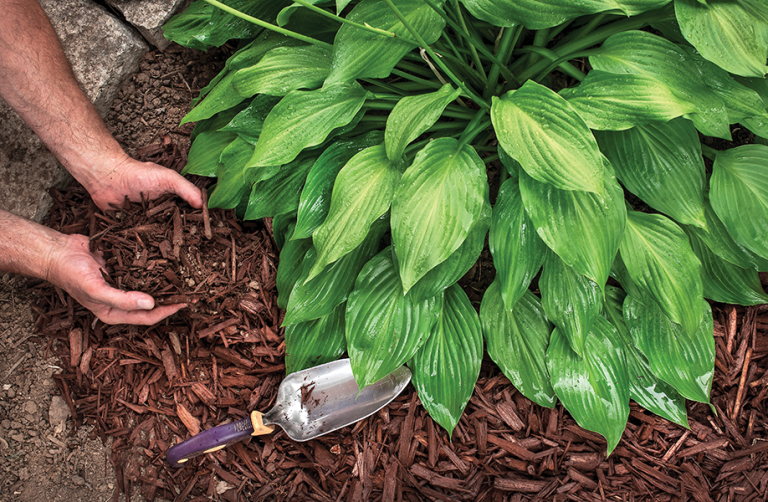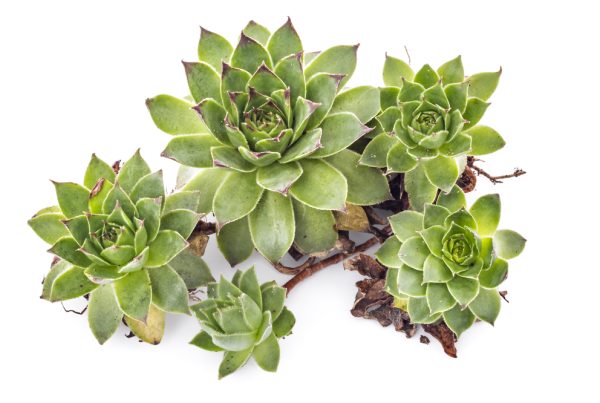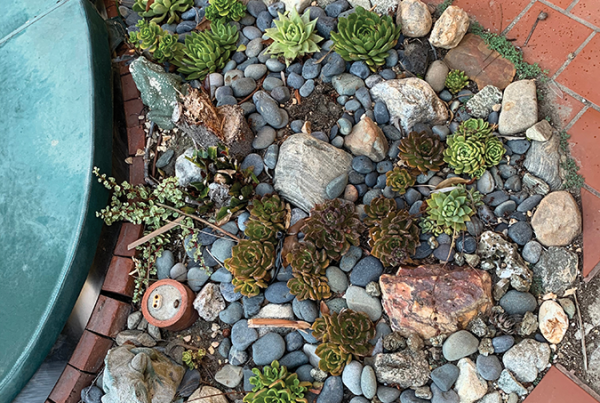

3223 Blume Dr
3223 Blume Dr
Design A Drought-Proof Backyard
Your lawn is like your face to the neighborhood. So why not make sure it always looks its best? Creating a drought-tolerant lawn and garden isn’t only important in arid climates. In fact, water conservation is becoming increasingly important due to higher demand and expense. That’s why a lot of homeowners implement drought-tolerant landscaping to cut back on water usage and protect their lawns.

WHAT IS DROUGHT TOLERANCE?
Drought tolerance refers to the ability of plants and landscaping to adapt to arid or drought conditions. Depending on your location and climate, drought periods can severely impact your yard, plants and landscaping. As such, to increase drought tolerance, many people practice xeriscaping, which is creating landscapes that use less water.
KNOW THE WETNESS
Most drought-resistant landscaping thrives with little water and consists of native plants, rocks and low maintenance components. BUT, how do you know if where you are is in drought? It’s pretty simple: Look up the U.S. Drought Monitor map online to see if your area is currently experiencing a drought. Another handy resource is Drought.gov, which has all kinds of useful information about drought conditions. This information will give you a good background on how much moisture to expect and how drought-resistant you want your yard to be.
5 DROUGHT-TOLERANT LANDSCAPING IDEAS
When it comes to adapting your landscaping to be more drought tolerant, just a few small changes can make a huge difference in the health of your lawn. Here’s how to get started:
1. Amend the Soil
2. Cover Plant Beds with Mulch
3. Choose Drought-Tolerant Plants
4. Consider a Rock Garden
5. Collect Rainwater

AMEND THE SOIL
Before planting anything, you’ll want to amend the soil. If you’re unfamiliar with soil amending, it’s the process of adding material to your soil to help plants grow. Additionally, amended soil retains moisture and collects rainwater better than compacted soil. To amend your soil, mix it with organic matter like compost, manure, straw or a combination of things. You should be able to find supplies at your local gardening store.
Cover Plant Beds With Mulch
To protect your plants and help them retain moisture, cover them with mulch. Mulch is a layer of organic or inorganic material applied to the surface of the soil to conserve moisture, improve fertility and reduce weed growth. Mulch can be made from compost, bark, woodchips and more and is easily accessible at your local home center.

Choose Drought-Tolerant Plants
Another way to make your landscaping more drought tolerant is by choosing plants that require little water. For instance, native plants, succulents and ornamental grasses are great choices if you want to add landscaping that won’t be majorly affected by drought conditions. Native plants adapt to their climate, and succulents and ornamental grasses require little water and maintenance.
What’s native in your area? Check out NWF. org — this online native plant finder can help guide you to what greeneries will bloom in your neck of the woods.
Consider a Rock Garden
A rock garden is a perfect solution if you want to add landscaping that won’t be affected by drought conditions. Additionally, since a rock garden requires no water or maintenance, you can cut back on landscaping expenses. Simply add your favorite rocks and boulders to introduce color and texture to your lawn.
Collect Rainwater
Finally, collecting rainwater is another tip to help save water and reduce landscaping expenses. You can install rain barrels or buckets to collect rainwater from gutter downspouts. Then, you can use it later to water your plants, trees and garden beds. Another way to collect water is by adding a rain garden to your yard. Rain gardens stop and hold rainwater, giving it time to soak into the soil.
Creating a drought-tolerant lawn and garden is important for several reasons. You can save money on water and landscaping expenses, protect your lawn and create a healthier outdoor environment. Luckily, by following a few simple steps, you can have a beautiful, lively yard year-round, no matter what weather conditions come your way!

Jerome Leonard
Realtor

3223 Blume Dr
Richmond, CA 94806
Office: 510-662-8554 | Mobile: 510-313-3673
jeromekjreal@yahoo.com
https://www.jleonardrealestate.com
01340812
I’d love to hear from you! Feel free to send me a message.
Jerome Leonard
Realtor

